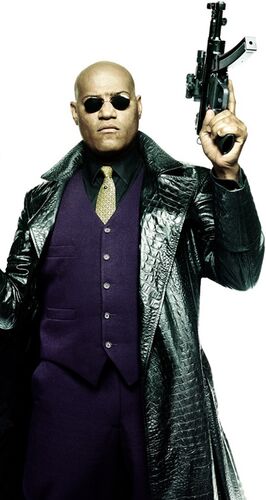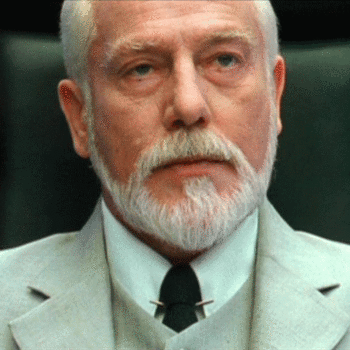The Matrix Reloaded (2003) Just Did Not Load Properly
Although the second part of the Matrix trilogy offers interesting ideas and exciting action, the confusing plot obscures the concepts it should exploreWhat a mess of a story is The Matrix Reloaded (2003) — the second part of the Matrix (1999) trilogy, in which the world we know turns out to be a simulation created by AI intelligences. We met some of the characters in the first part, The Matrix (1999), reviewed here. But then what happened?
First, we’re introduced to the new technician, Link, but no one explains where his predecessor Tank went. Then Zion (“the last human city, the only place we have left”) is introduced and there we find ourselves at the infamous Party Scene:
To look at this techno-hedonistic rave, one might think we’ve entered volcano-challenged Pompeii of long ago. But this party is more reminiscent of the Weimar Republic.
Why the party? Well, here we do get an answer. Morpheus, the Zion operative whom we met in The Matrix, tells Zion residents that the machines are coming to kill them all. An army of 250,000 Sentinels, programmed to destroy mankind, will besiege Zion within 72 hours. So he wants the humans to really stick it to the machines by partying.

This is confusing. Are these people gyrating out of spite? It seems like the crowd is saying “Eat, drink, and be merry for tomorrow we may all die.” Then Neo, the computer hacker we met in The Matrix who is Morpheus’s protege, dreams right after the party that Trinity, another Zion operative who befrinds him, will die. It’s as if everyone’s energy is spent and they remember they’re all doomed.
I’m reaching back into the Matrix trilogy here because, on December 22, Matrix: Resurrections drops (the fourth in the series, after an eleven-year absence) and we will probably need the back story from the trilogy.
After the announcement of doom, the lead characters are sent by the Oracle, a clairvoyant computer program, on a MacGuffin, a useless chase where each task seems to be just an excuse to get the characters from one place to another.
Along the way, Agent Smith, a security program that was supposed to have been destroyed by Neo in Part 1, reappears, claiming that he did not obey his programing and delete himself after all.
So it appears that Smith is now a sentient AI. I’m not sure how this is possible, considering that autonomy, choice, is the one thing the machines can’t control, as admitted by The Architect, whom we’ll discuss later. So how can Smith express autonomy when he has no way of understanding the concept? He is, incidentally, also a virus that can possess other computer programs.
Speaking of autonomy, the themes of free will, faith, and fatalism are frequently discussed. But unlike what we see in The Matrix — where faith and belief are held to be virtues — in The Matrix Reloaded, we witness intense debate about them among the characters. But the debate is not very clearly set out. The machines choose what they want to believe about free will, nobody has any idea what Neo thinks, and Trinity’s opinion is likewise unknown. The only true anchor is Morpheus who continues to believe the Prophecy that the Matrix that has trapped most of humanity will be destroyed.
The story’s coherence hangs by a thread until the climax — at which point, it falls apart entirely. After random fight scenes and needless car chases, we reach The Source… or rather, the waiting room of the Source (the Matrix’s central computing core). Here, we meet the Architect, the program that created the Matrix. And we get answers. Sort of.

What follows is one of the most incoherent, pretentious speeches to ever darken the mind of a writer. This scene has been mocked without mercy, and it should be. The point is this. The Prophecy, it all turns out, is a lie. The Oracle is a computer program built to study human nature, and it realized that the only way to keep the Matrix from destroying itself was to create an anomaly which would make room for human choice. Neo is supposed to make the ultimate choice by entering the Source, which is somewhere in Zion, and lead a bunch of Adams and Eves to restart the human population after the machines destroy the city.
What does this have to do with The Matrix? Don’t know! How does the state of the free humans affect the humans trapped within the Matrix? Don’t care! How does Neo’s existence act as counterweight to all the other human’s choices thereby creating balance within the Matrix? Stop thinking about it!
Matters get even more complicated when the Architect informs Neo that Trinity is a factor in his situation that the previous Neo’s never had (What? There were previous Neos?). So his choice is somewhat different from theirs. There are two doors, one leading to the Source, the other leading to Trinity. Neo must choose to save the Matrix and humanity or save the one he loves. What was behind door number 2 for the other 5 Neo’s? Whatever!
Moving on!
Of course, Neo saves Trinity, then tells Morpheus that the Prophecy is a lie. But the movie does slip in a hint of hope. Neo kills a few machines with his mind magic, suggesting that maybe there is a providence at work outside of the Matrix. So faith is not entirely dead…just faith in the coherence of this trilogy.
The Matrix Reloaded wants to be a philosopher after one semester of philosophy class. It is driven by great ideas, but it doesn’t follow through with them. Instead, it features a convoluted cacophony of scenes that don’t mesh. Machines becoming sentient is interesting; however, the machines pick and choose their autonomy when convenient, so there’s no explanation for situations like Agent Smith’s ability to think freely, the Architect’s inability to comprehend choice, and the Oracle’s knowledge of choice without having autonomy herself — all at the same time. It’s all very confusing, and as we will see in my review of the third part of the trilogy, The Matrix Revolutions, the third try doesn’t help matters.
Will the fourth attempt, The Matrix Resurrections coming up December 22, help it all make sense? Stay turned!
You may also wish to read: Will The Matrix Resurrections (drops December 22) break the mold? The culturally influential trilogy (control by evil aliens) enjoys a fascinating beginning — but a thud! ending. Can we really escape a world of illusions simply by following our most basic influences? If wisdom can’t help, why should instinct be the answer?
and
How can we be sure we are not just an ET’s simulation? A number of books and films are based on this Planetarium hypothesis. Should we believe it? We make a faith-based decision that logic and evidence together are reasonable guides to what is true. Logical possibility alone does not make an idea true.
